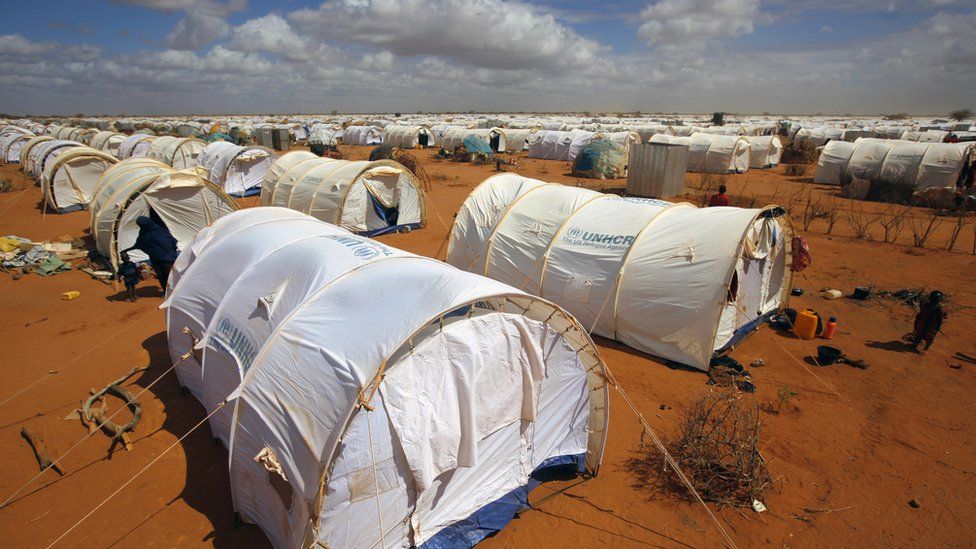A record number of children were seen by MSF teams in Dagahaley refugee camp, Kenya, in 2022; Rates of severe acute malnutrition have risen sharply as cholera rages, drought continues and a lack of donations and response prevails; MSF urges donor countries who provide financial assistance to immediately scale up and send their pledges to enable a fast response.
Hospital admissions of children suffering from severe acute malnutrition have spiked in Dagahaley, one of three refugee camps in the Dadaab refugee complex, eastern Kenya, amid worsening humanitarian conditions in the overcrowded camps, says Médecins Sans Frontières (MSF). MSF calls on donor countries to urgently release funds for humanitarian assistance in response.
In 2022, MSF teams treated a record 12,007 patients – an overwhelming majority of whom were children – in our pediatric ward and inpatient therapeutic feeding centre in Dagahaley.
The figure represents a 33 per cent increase from the preceding year. Consistent with the alarming surge in child admissions, MSF data also shows a gradually increasing trend in the global acute malnutrition rate among children in Dagahaley camp, which reached eight percent during mid-upper arm circumference screening in December 2022. This marks a 45 per cent increase compared to the previous screening in July 2022.
Even as the immediate priority is to respond to the escalating needs in the camps, it is equally vital to implement a durable solution for refugees
Several complex factors are aggravating the humanitarian situation in Dagahaley, stretching the healthcare capacity in the camp. An ongoing cholera outbreak, declared at the end of October 2022, has gripped the refugee camps, as well as communities in Garissa and Wajir counties.
A crippling drought, and prolonged conflict, continue to displace people in the Horn of Africa in search of food and water. And an inadequate humanitarian response as a result of scarce funding is adding further pressure, deepening wide-scale gaps across sectors including water, sanitation and hygiene, nutrition, health, and protection.
Worryingly, forecasts paint a grim outlook for refugees this year. OCHA has predicted the forthcoming rainy season, from March to May, will fail. If so, this would be the sixth consecutive failed rainy season and will exacerbate the scale and severity of the humanitarian emergency in the Horn of Africa. Humanitarian organizations are concerned about expected funding cuts for refugees, which would force them to further downscale operations at a time when needs are rising fast.
MSF, in coordination with the host community and humanitarian organizations, has stepped up our emergency support beyond comprehensive healthcare in the Dagahaley camp. We have opened two medical outposts, built 50 latrines, put in place two water tanks, and distributed plastic sheeting and floor mats for some 800 newly arrived families residing on the outskirts of the camp. Despite our efforts to target the most vulnerable refugees living on the fringes of the camp, the current humanitarian crisis in Dadaab urgently requires a wide-scale response to avert further deterioration.
MSF calls on donors to rapidly release financial assistance, critical to meeting surging lifesaving assistance and protection needs. The UN Refugee Agency has made appeals to donors to mobilize resources for the re-opening of the IFO 2 refugee site, initially closed in 2018, to accommodate up to 80,000 refugees from the congested camps ahead of the approaching dry season when more people are expected to make their way into Dadaab. Unless the donor appeals materialize and urgent action follows up, the incoming influx of refugees can tip the crisis beyond the levels humanitarian organizations can manage, with currently allocated resources.
Refugees in Dadaab have been locked in a 30-year protracted emergency. Even as the immediate priority is to respond to the escalating needs in the camps, it is equally vital to implement a durable solution for refugees.

